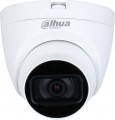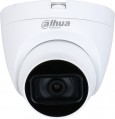Mount
—
Indoors. Models designed for indoor installation and designed for relatively favorable conditions, without precipitation, dust, temperature changes and other similar influences. These cameras do not require the enhanced protection required for outdoor installations (see below), making them less expensive. Their main disadvantage is also associated with the lack of the mentioned protection — we are talking about the impossibility of full-fledged use outdoors: outdoor installation, even under a canopy or in another relatively protected place, can eventually lead to premature damage to the camera.
—
Street. Cameras designed from the ground up for outdoor use and equipped with the appropriate protections — most notably a rugged housing that provides protection against moisture, pollution, heat/frost, etc. In addition, the design may provide special anti-vandal solutions — for example, automatic notification of an attempt to damage the camera; and in themselves such models are more resistant to vandalism than indoor cameras. Of course, if necessary, an outdoor camera can be installed indoors; however, said protection has a corresponding effect on price, and the real need for such characteristics is only in heavily polluted places such as industrial workshops or closed construction sites.
Number of LEDs
The number of backlight LEDs (see "Design and capabilities") provided in the camera design.
Theoretically, more LEDs provide more power and, accordingly, range (see below) and efficiency
of IR illumination or LED illumination. However, in fact, such light sources can vary markedly in performance; in addition, a lot also depends on the features of the camera itself. Therefore, in fact, this indicator is a reference, and when choosing, it makes sense to pay attention to parameters that are closer to practice — in particular, the same backlight range (see below).
Illumination range
Operating range of the backlight (see "Design and capabilities") installed in the surveillance camera. This term usually means the maximum distance from the camera to the observed object, at which it is able to provide a relatively high-quality and legible image in the complete absence of other light sources. Of course, the actual backlight range may differ from the claimed one, and these differences are most often in the direction of increase (for example, due to the presence of the same additional light sources). However, if the possibility of shooting with backlight is important for you, you should focus on the claimed range.
Minimum illumination
The lowest degree of illumination of the scene being shot, in which the camera is able to provide normal visibility. Usually, this item specifies the values for the daytime mode of operation (in the night mode, the minimum illumination in many models may be zero at all, because in such cases the IR illumination is turned on, see "Design and capabilities"). And if the camera is capable of shooting in colour, it usually means the lowest illumination necessary to obtain a colour image.
The lower this indicator, the better the camera works in low light, the brighter and more clearly visible image it is able to provide in such conditions. At the same time, note that in low light, night mode is often preferable, and in the presence of the aforementioned IR illumination, it is more likely to focus on the range of its operation (see above).
There are comparative tables that allow you to evaluate the degree of illumination indicated in the characteristics from a practical point of view: for example, an indicator of 0.2 lux corresponds to clear eyes on a full moon.
Signal to noise ratio
The signal-to-noise ratio that the surveillance camera corresponds to.
This indicator describes the ratio of the level of the useful signal (the actual image produced by the camera to an external device) to the level of extraneous noise that inevitably arises during the operation of electronic circuits. Such noise appears in the image as characteristic noise (“snow”). The higher the signal-to-noise ratio, the less interference on the screen, the clearer and better the image is, and the smaller the volume of recorded video files. It is believed that visible noise practically disappears at a ratio of at least 45 dB. However, among modern cameras there are also higher rates.
Power consumption
The power consumed by CCTV cameras during operation. Knowing the indicator of energy consumption, you can, for example, calculate the battery life of equipment from an uninterruptible power supply or choose a suitable “uninterruptible power supply”. Also, with the support of PoE technology, it is worth considering the power consumption when choosing a PoE switch or PoE adapter.
Operating temperature
The ambient temperature range in which the camera can be used normally.
All modern surveillance cameras normally tolerate temperatures typical for houses / apartments, offices and other premises with similar mild conditions. Therefore, it is worth paying attention to this parameter, first of all, if the device is planned to be used outdoors — or in a room where the temperature does not differ much from the street temperature or, for technical reasons, should be low (freezer warehouse, refrigerated car, etc. ). In such cases, the lower temperature threshold is especially important: for example, almost all outdoor cameras have the ability to work
in cold temperatures below 0 °, but among indoor models such features are much less common. However,
frost-resistant devices(with an allowable temperature of -40 °C and below) can also be found not only among outdoor cameras, but also among “internal” cameras.
As for the upper temperature limit, it is usually not lower than +40 °C, which is quite enough for using the camera in a temperate climate. In some models, this limit reaches +50 °C and even +60 °C, making them suitable even for hot countries. However, note that we are talking exclusively about use in the shade; the possibility of working under direct sunlight should be clarified separately.
Protection level
The degree of protection of the camera against moisture and foreign objects according to the IP standard.
This protection describes how well the camera body protects sensitive internal components from the impacts mentioned. By default, it is denoted by the letters IP followed by two numbers. The first digit means protection against the ingress of solid objects and dust, and the following levels of protection correspond to its individual values:
1 — protection against objects with a diameter of more than 50 mm (large body surfaces)
2 — from objects with a diameter of more than 12.5 mm (fingers, etc.)
3 — from objects larger than 2.5 mm (most instruments)
4 — from objects more than 1 mm (almost all tools, most wires)
5 — dustproof (full protection against contact; dust can penetrate inside, but does not affect the operation of the device)
6 — dust tight (case with full protection against dust and contact).
The second digit characterizes the protection against moisture, here the values \u200b\u200bcan be as follows:
1 — protection against vertically falling drops of water;
2 — from water drops with a deviation of up to 15 ° from the vertical axis of the device;
3 — from water drops with a deviation of up to 60 ° from the vertical axis of the device (the minimum level that allows you to operate the camera in the rain);
4 — from splashes from any direction;
5 — from jets from any...direction;
6 — from sea waves or strong water jets;
7 — the possibility of short-term immersion to a depth of 1 m (without the possibility of continuous operation in immersed mode);
8 — the possibility of long-term immersion to a depth of more than 1 m (with the possibility of continuous operation in immersed mode).
Of course, surveillance cameras are usually not designed for immersion under water — the last two options only characterize a high degree of moisture resistance.
In some models, one of the numbers may be replaced by the letter X — for example, IPX7. This does not mean that there is no protection, but that the corresponding parameter was not certified according to the IP standard. At the same time, the degree of non-certified protection can be quite high — for example, the example above corresponds to the possibility of complete immersion under water, which requires a high degree of closeness (minimum dust resistance level 5). Also note that the complete absence of IP marking also does not mean that the camera is absolutely not protected from negative influences — again, the point is that the case simply did not pass official certification. However, if dust and water protection are critical, you should choose among models with IP certification.
Material
The main material used in the construction of the camera body.
— Plastic. Inexpensive and at the same time quite practical material. Plastic is light, quite strong (not as strong as metal, but still quite sufficient for most cases), chemically inert (and therefore not susceptible to corrosion and insensitive to moisture), and also has a relatively low thermal conductivity (which provides additional protection for extreme temperature fluctuations). Due to all this, this material is very popular in indoor chambers (see "Usage"). At the same time, it is somewhat less suitable for outdoor work.
— Metal. The main advantage of metal, in comparison with plastic, in the case of surveillance cameras is high strength and reliability. This allows you to use it even for street models that work in difficult conditions and must have a certain anti-vandal resistance (at least not immediately “give up” when trying to break or break). At the same time, such material is much more expensive, and therefore less common.

